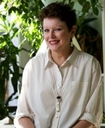Date/Time: Thursday, August 3, 2017 to Friday, August 4, 2017
Location: Wasserstein Hall, Harvard Law School campus
Description: Imagine home as a place for regeneration, a sanctuary for healing the wounds of the outside world. It is clean, uncluttered, and manageable, reducing risk of disease and injury and offering restoration when the inevitable occurs. It regenerates on a daily basis, supports good sleep, encourages exercise, and makes healthy cooking fun. This program has a different perspective on universal design; emphasizing elements really wanted in a home and a proactive approach to home design that supports and stimulates healthy living and wellness as a prime driver. Universal design should be an inherent part of all residential projects, not just those for older and disabled people. It goes beyond just accommodating physical differences; it offers the promise of doing what you want to do-- --and actually eliminates disability by design.
Regeneration, prevention, motivation, and elimination of disability—that’s a lot to ask of a house, but it can be done. In the past thirty years, Cynthia Leibrock and Mary Jo Peterson have designed hundreds of projects, presented their work internationally and produced seven books on universal and health design. Drawing from this experience, this program offers the best of universal design, the most applicable, exciting, and innovative products, concepts, and projects and the latest research on aging in place from the U.S., Canada, Northern Europe, and Japan--countries with an aging demographic and increased consumer demand for universal design. Universal design encompasses confusing realities. Even though clients of all ages, sizes, and abilities need housing and accommodations to meet their needs, many designers struggle with marketing universal design services. Although multi-unit housing projects of all types are required by U.S. law to accommodate the growing population of residents with disabilities, compliance with codes and standards merely scratches the surface of universal design. Patients are being discharged from hospitals “sicker and quicker,” but they are sent home to housing which either further disables or reinjures them.
As we age, many of us wish to stay in our homes, but our homes may not have been designed to support this. Others plan to sell their homes and move into accessible housing, but there is little affordable accessible housing available in the U.S. . We may all occupy assisted living or skilled nursing eventually but no one truly wants to live in a healthcare facility. Many of us will have multiple relocations in our “golden” years during this confusing and segregating continuum of care. This program addresses these issues and highlights alternatives that suggest you can truly age well in place without moving, and without turning home into a hospital.
For the last eight years Cynthia has literally been living with contractors to demonstrate the best of universal design--in her own home. This program includes a virtual tour of this project which integrates over 200 universal and green design elements. Many of these elements have been improved several times. While about half of these ideas cost less than $50, some are expensive. Soak in a bathtub inside a bathtub while experimenting with chroma-therapy, using color to heal. Access this tub from a disappearing, overhead lift. Reset your body clock with lighting and shade controls automated to help restore circadian rhythm. Rehydrate in a steam shower after a long flight or to recover from a cold. Discover induction cooking--safer, faster, and more energy efficient. Seal in nutrients with a steam oven or countertop steamer. Keep veggies fresh for weeks using dual refrigeration. Exercise in the most beautiful part of the house, not the basement. Enjoy the adjacent hot tub as a post-workout reward. Notice relaxing views, clean lines, and the green design--not the grab bars, gurney accessible bathroom, ceiling track lift, or accessible route through the house. They are all there, but invisible. The best of universal design is visually exciting.
Cynthia’s home became a necessity, not a demo. Shortly after remodeling, her husband tore his Achilles tendon and she had unexpected hip surgery. He was on a scooter and she was using a walker. No one else was there to help. They couldn’t help each other. The hospital recommended a “rehab Facility.” In other words, they were heading for THE HOME. Instead they headed for THEIR home, a safe and comfortable place. Theirs’ is a home for regeneration, a home for life.
In addition to Cynthia’s home, this course explores best practices in remodeled and new single family custom residential, s well as production building, both single family and multifamily, providing an opportunity to consider the various models from which one can choose in creating the proactive universally designed home.
Who Should Attend
This new program showcases the best universal products and projects and also examines the latest international design research on design for aging with a focus on health and longevity. It is designed for specialists in kitchen and bath design, residential architects, universal designers, physical and occupational therapists, independent living and home healthcare providers, and all residential interior designers. We are especially interested in attracting educators who train those offering universal design to future generations.
-
Residential architects
-
Universal designers
-
Kitchen and bath designers
-
Physical and occupational therapists
-
Independent living and home healthcare providers
-
Residential interior designers
Learning Objectives
-
With emphasis on class discussion, demonstrate how regeneration, home health care, prevention, motivation, and elimination of disability can be accomplished through interior design
-
Analyze the latest research on aging in place from the U.S., Northern Europe, and Japan
-
Apply the best universal products to design for aging in place and home healthcare
-
Offer techniques for marketing universal design on all projects, not just select projects for select populations



